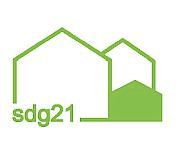At least 18 million birds die each year from bird strikes on glass. It is more than disconcerting that the 100,000 to 200,000 victims of wind energy are discussed so intensively, but the main causes of bird deaths are not.
"Glass kills non-specifically, i.e. potentially all bird species, because it is obstructed at almost any flight altitude. It kills birds regardless of species, age, sex and time of day. Studies from the USA prove this. Of course, one can say that birds that occur often ("common species") are naturally affected often, birds that occur rarely not so often, but this is only due to the number of birds present. Many bird stations regularly have glass bird strike victims from a wide variety of species: birds of prey, woodpeckers (even very often), songbirds, woodcocks, migratory birds, site-faithful birds... simply everything ... up to a stork where the collision was even observed live," says Dr. Judith Förster, project manager of the BUND NRW project "Avoiding bird strikes on glass".
Link: www.bund-nrw.de/themen/tiere-pflanzen/vogelschlag-an-glas
Two other major causes of bird population decline:
- The number of insects has already decreased by up to 80% in some areas of Germany and this of course also has an impact on bird life. Birds such as swallows or swifts live on insects. Insects are particularly important for a large number of small birds in the rearing phase. The massive and alarming global and nationwide insect mortality is depriving (not only) swallows, swifts and bats of their food basis and leading to a massive decline in populations. When an important part of the food base disappears, this has extreme effects on all species at the bottom of the food chain. The lobbyists of the agro-poison industry have a massive (and well-organised) interest in ensuring that this does not become an issue.
- The loss of nature and habitats and the increasingly intensive agriculture in the context of globalisation and free trade pose a particular threat to birdlife.
Keywords:
DE-News, Renewable, Environmental policy, Wildlife/animal friendly construction, Aesthetics / Architecture / Building Culture, Ecology

